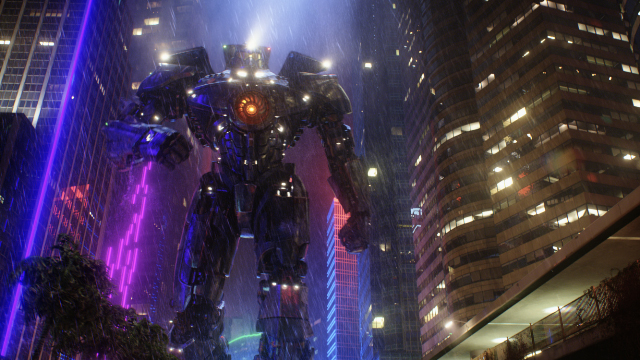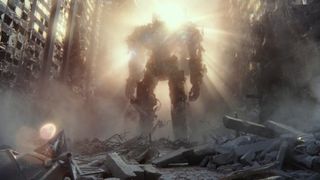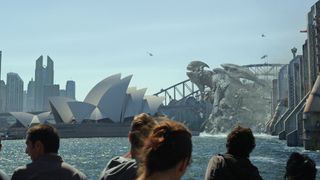Meet the man who brought Pacific Rim's Kaiju and Jaegers to life
The tech behind Pacific Rim's fighting spirit revealed

This is an old feature that has been republished for TechRadar's Movie Week. The original piece was published in 2013.
A creature towers above a miniature landscape, its upper body stretching beyond wispy clouds. There is commotion underneath, created by the threat of being trampled, but the creature is oblivious. Its eyes trained on something else in the distance, its arms up ready for battle.
This could describe any of the many fantastic battle scenes in Pacific Rim, director Guillermo del Toro's monster bash which heads to Blu-ray in the UK November 11, but it's actually a description of The Colossus, a 19th Century painting by Goya.
According to Hal Hickel, animation director on Pacific Rim, the oil painting was one of the surprising inspirations for the look and feel of a movie that at first glance owes more to pixel power than a painter's brush.
"That was first image he showed us, The Colossus by Goya, and the first words del Toro spoke to us about Pacific Rim were 'operatic' and 'poetic'," explains Hickel to TechRadar.
"He told us to forget about the painting's landscape and imagine it was the ocean and the clouds were sea spray and this figure was coming out."

And that was how the scene was set in pre-production for Pacific Rim, a movie with the achingly simple premise: man-made robots fight giant monsters.
Get the best Black Friday deals direct to your inbox, plus news, reviews, and more.
Sign up to be the first to know about unmissable Black Friday deals on top tech, plus get all your favorite TechRadar content.
Imagining these amphibious creatures (or Kaiju as they are known in the movie, a description ripped from the pages of Japanese storytelling) and giant robots (called Jaegers in Pacific Rim) takes a lot of computational power, VFX wizardry and, well, suspension of disbelief.
But this is something Hickel is well versed in. His CV is a geek tick-list of VFX laden Hollywood movies.
Dream job
As animation supervisor at ILM (Industrial Light & Magic) his work can be seen in the Star Wars prequels, Super 8 and the movie that began Marvel's cinematic superhero onslaught, Iron Man.
It was Pacific Rim, however, that proved to be the perfect job for Hickel and his animation team.

"It was a dream come true working on this movie. If you could see my office, I am completely surrounded by toy robots and Kaiju.
"We hadn't worked with Del Toro before but we all knew he had a great vocabulary for visual effects."
Before Pacific Rim, del Toro had already showed the world with Pan's Labyrinth and two Hellboy movies he could successfully meld VFX with humour and pathos.
Much like his contemporaries Sam Raimi and Peter Jackson, del Toro came from the practical effects laden world of horror before hitting blockbuster status – a grounding Hickel believes worked well for Pacific Rim.
"The colour, the vibe, del Toro knew exactly the mood to go for with the movie," says Hickel.
"Pacific Rim is a bit like a comic-book film. We were taking on a goofy sub genre but del Toro had the right tone. He didn't want to it to be too adult, he wanted it to be fun."

It's credit to a movie, then, that focuses on lumbering robots that these oversized metal machines close-up looked like practical effects but were practically all CGI. This was due to the 'colossal' scale of the movie del Toro, by way of Goya, wanted to create.
It was a movie that was even too big for the streets of Hong Kong.
"This was definitely a movie that was heavy on CG. Typically you go out and shoot as much as you can in camera but the scale meant we couldn't," notes Hickel.
"While the baby Kaiju scene was typical special effects, the big battles were 100% CG. The action was on such a huge scale. There aren't any boulevards in Hong Kong wide enough for that type of action. There is quite a lot of destruction and water interaction in the movie that we had to incorporate."
Marc Chacksfield is the Editor In Chief, Shortlist.com at DC Thomson. He started out life as a movie writer for numerous (now defunct) magazines and soon found himself online - editing a gaggle of gadget sites, including TechRadar, Digital Camera World and Tom's Guide UK. At Shortlist you'll find him mostly writing about movies and tech, so no change there then.
Most Popular




